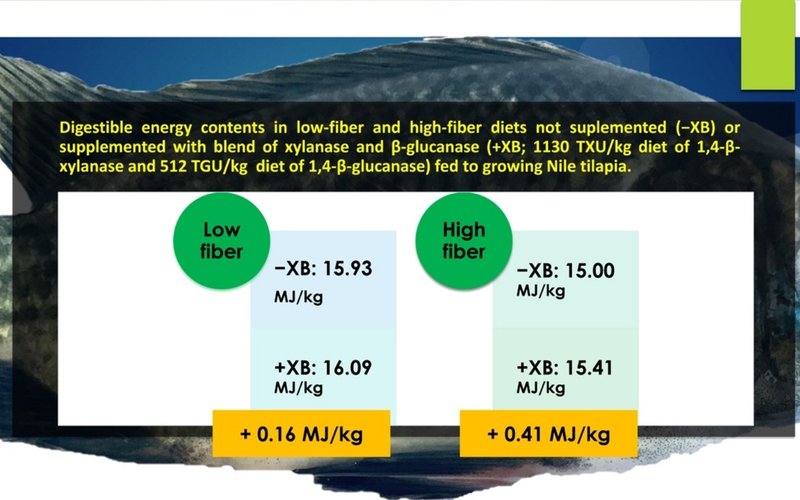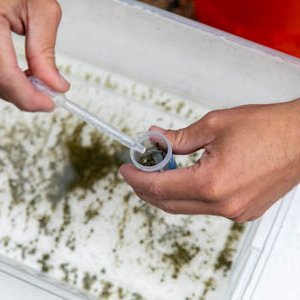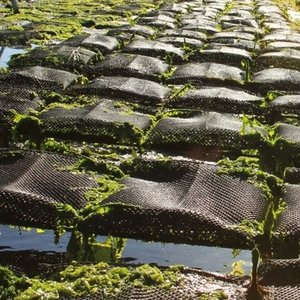Recent evidence has shown that the advantage of top-spray enzymes is to surmount the problem caused by high temperature during extrusion and drying processes and ensure high residual content of exogenous enzymes in extruded aquafeeds.
A team of Brazilian researchers, together with BASF, studied the effects of a liquid blend of xylanase and β-glucanase (XB) in low and high-fiber diets fed to growing Nile tilapia, Oreochromis niloticus. Fish were fed with two levels of fiber (low or high), either not supplemented (Control) or supplemented with XB (0.2 g/kg, contained analyzed 1130 TXU/kg of 1,4-β-xylanase and 512 TGU/kg of 1,4-β-glucanase). Data was obtained during two subsequent runs of feces collection of ten days, run 1 (initial body weight of 60 g ± 3.4 g), and run 2 (initial body weight of 72 ± 3.7 g).
The low-fiber diet with XB exhibited a significantly higher apparent digestibility coefficient of gross energy than other diets. However, the high-fiber diet containing XB revealed a higher apparent digestibility coefficient than that without XB addition. Compared to control, XB addition improved the apparent digestibility coefficient of dry matter, crude protein, calcium and phosphorus.
Relative to control, the high-fiber diet containing XB showed an equivalent apparent digestibility coefficient of Thr than the low-fiber diet without XB inclusion. The high-fiber diet with XB exhibited a comparable apparent digestibility coefficient than the low-fiber diet without XB addition. The low-fiber diet showed an increased apparent digestibility coefficient of all essential amino acids, except lysine and methionine. However, compared to control, XB addition improved the apparent digestibility coefficients of branched-chain amino acids, lysine, and threonine.
“Overall, liquid XB at 0.2 g/kg in extruded pellets optimized digestibility, increased digestible energy, and retained nitrogen contents, mainly in the high-fiber diet. This study identified the potential of liquid XB to be used on an industrial scale by application onto extruded pellets for precision Nile tilapia feeding,” researchers said.
Check out the study here.













